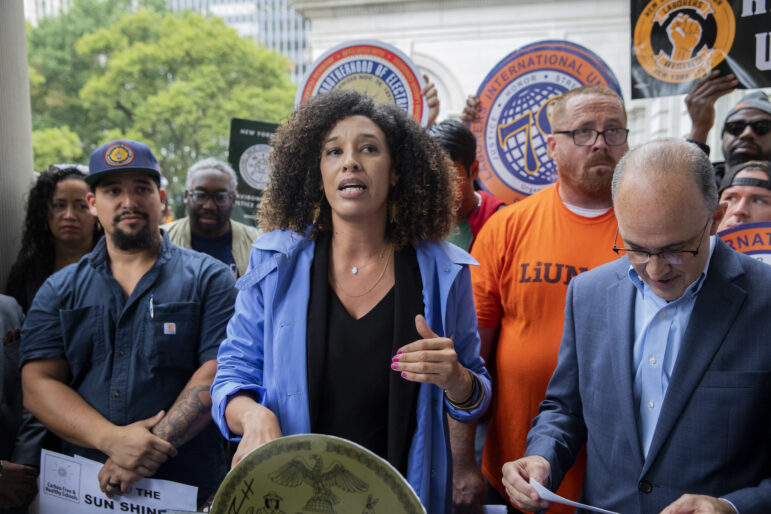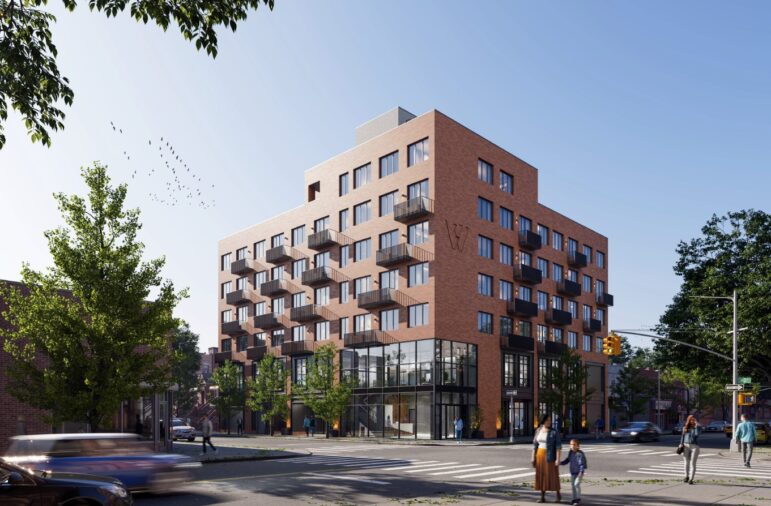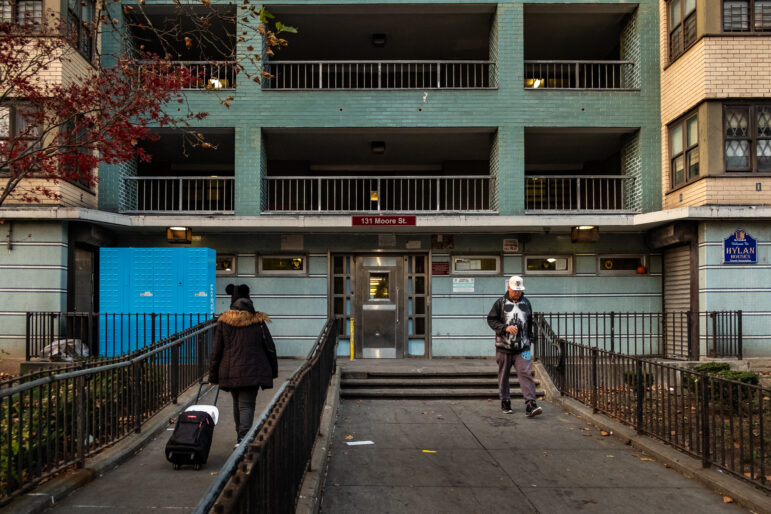Whether it’s a wall’s worth of graffiti, a sign at a protest, a song on the radio or a piece in a museum, political art is intended to send a message. Sometimes that message is blunt and obvious, but there can be subtleties and nuances as well. Like all art, the message that gets transmitted ultimately depends on how the viewer interprets it, and that might not reflect the full meaning the artist hoped to convey.
“Art at the Limits” is City Limits’ ongoing series exploring the intersection of art, politics and policy in New York–from art about political issues to the policy topics that affect the arts in the city. We invited artists from the current (and very political) “Surface(s)” show at HG Contemporary, which runs through September 5, to talk about what their art meant or tell us about the person behind each piece.

Alexandra Grounds
Alexandra Grounds
“My paintings are a way to take the experiences that undermine young women, that shake their confidence and ultimately limit dreams and aspirations, and turn them into a message of power, optimism and comfort. Rather than downgrading female sexuality and after movements such as #MeToo, I want my work to embrace and celebrate these vital qualities. Drawing inspiration from female cultural icons, especially those of the past, I seek to modernize the ideas that made them icons to begin with. We have built ourselves upon notions handed to us that target our idea of self-worth and potential. In reality, we are built upon ourselves and ourselves alone. We are as strong as the power we give ourselves, which ultimately, is limitless. My art allows me to become a catalyst for understanding and progress in my community. Through my work, I want to capture these emotions with brushstrokes – bold, defiant hues, illuminated, towering subjects – then I could help to empower these women again, bring these issues to light, and advocate for change. Catching inspiration when it is thrown at me is not the difficult part. There is inspiration flooding each and every inch of this world. The difficulties lie in channeling exactly what needs to be changed through the expressions of my subjects, and to create a narrative that will stand any test of any time through any movement. Painting is no longer the hobby of a teenager, but the start of a dialogue that has no ending.”
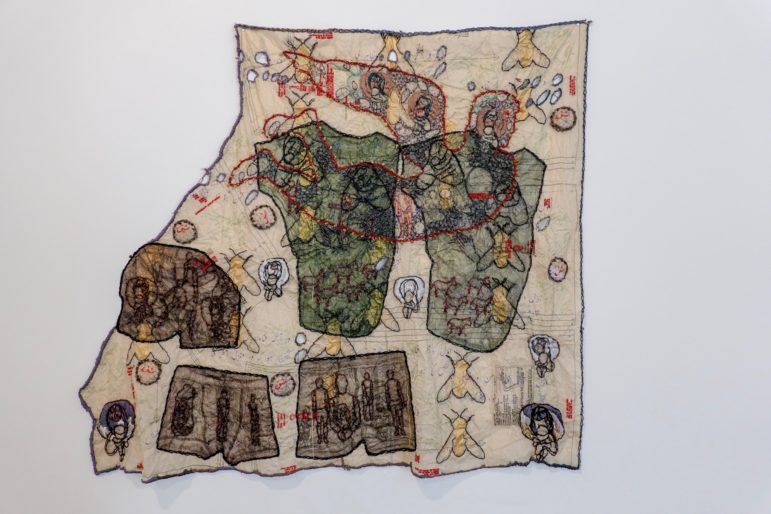
Mehwish Iqbal
Mehwish Iqbal
Iqbal’s diverse use of mediums, amalgamating across the board, which include painting, printmaking, textiles, ceramics, sculpture and installation art, explores her messages of womanhood and evolution. The Pakistan-born artist is known for her experiment in themes such as influx of refugee and migrant diaspora, hybrid identities, and the complex state of individuals.

Stephen Wilson
Stephen Wilson
Stephen Wilson a mixed-media artist best known for his artistic exploration of the intersections between traditional craft and contemporary culture through blended use of handicraft techniques with modern technologies and pop iconography. Wilson’s style fuses influences from the Arts & Crafts and Decorative movements with modern and pop artists like Robert Rauschenberg and Andy Warhol. Stemming from a background in embroidery design and technology, Wilson creates and digitizes designs that are then machine-embroidered and finished with mixed-media hand processes including found-object assemblage and painting. High fashion influences are prevalent in his work, expressed through use of designer-branded packaging and luxury fabrics – Hermès silk, Chanel wool, limited-edition Gucci boxes. His redefinition of textile and embroidery-based art forms evokes questions regarding luxury consumerism and high-low art distinctions. The balance between art, craft, and fashion noticeably prevalent throughout Wilson’s work is largely informed by his own personal history. A longtime career in the fashion and commercial embroidery industries is reflected in his unique medium, reinforced by a studio location in Charlotte, North Carolina, a former mill-town and textiles hub.

McCrow
McCrow
McCrow’s stories uncover the tumultuous relationship our society has with firearms and their role in the decay of social affections. McCrow and his work are dedicated to funding weapons and munitions destruction projects in areas suffering from the effects of war and gun violence. The showing of his work will also bring forth his powerful campaign, Gun Neutral, an opportunity for the industry to use their fictional weapons as a means to destroy small arms that could otherwise fall into the wrong hands.
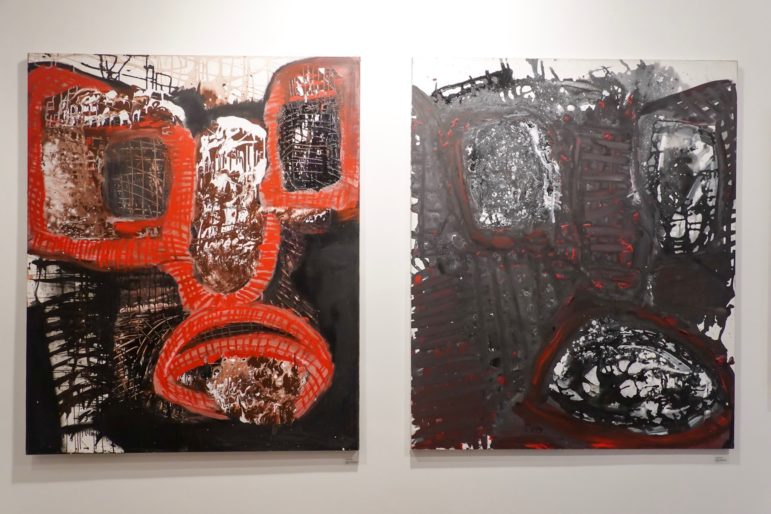
Solange Umutoni
Solange Umutoni
The New York based artist fled her native country Rwanda during the Genocide and found refuge in the US in 1997. Originally discovered in 2008 by art dealer and curator Jeffrey Deitch, she participated in a group show curated by Deitch and continued working on her craft. The experiences during the genocide and the stresses endured afterwards are relieved when working on her mixed media paintings, as the artist’s therapeutic relationship with creating takes hold.
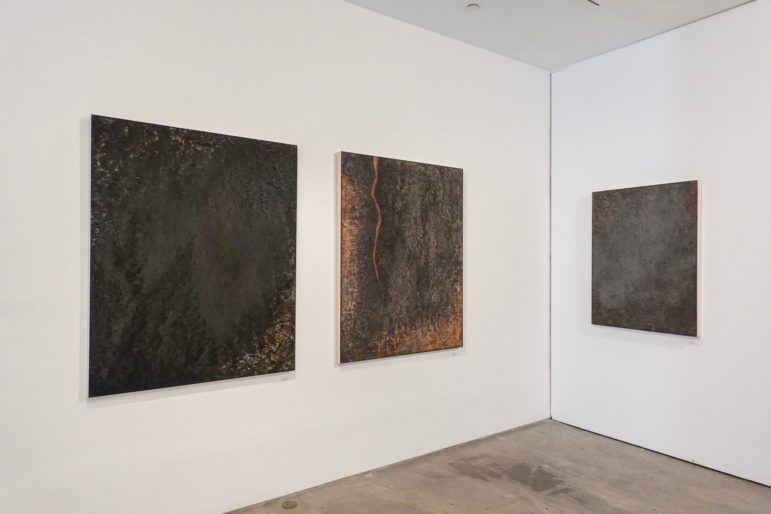
Jerry McLaughlin
Jerry McLaughlin
“I paint to find quiet space—space where the internal dialogues are silenced, where there is no sense of time. I search out that same space through meditation. It is difficult. Painting, meditating, and quieting my mind are among the hardest things I have ever done. But they are also powerful. Having control of our emotions and our mind is the most powerful thing humans can do. That kind of quiet, deep, powerful experience is what I try to create in my paintings. My work is informed by the urban world of concrete, asphalt and steel, as well as by the decay, erosion and weathering of that environment. It is both austere in its minimalism, and intimate in its detailed textures, which invite close examination. The powerful, rough presence of these paintings is the result of intensive working and building up of many layers of paint, pigment, and cold wax medium, along with additives such as earth, sand, and ash.”
City Limits’ reporting on the intersection of art and policy is supported by the Laurie M. Tisch Illumination Fund. City Limits is solely responsible for all content.


